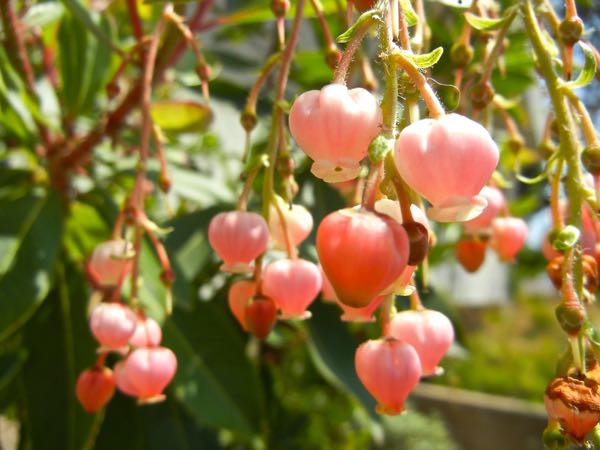Ericaceae, commonly known as the Heath or Heather Family, is a large family of flowering plants belonging to the order Ericales. It encompasses a wide variety of species, with approximately 124 genera and around 4,250 known species.
Ericaceae is well-known for its diverse and beautiful members, which include several popular and economically important plants. Some of the more recognizable members of the family include cranberries, rhododendrons, blueberries, and azaleas. These plants are widely cultivated for their ornamental value, as well as for their edible fruits in the case of cranberries and blueberries.
The Ericaceae family is characterized by a number of common traits. Most members of the family are evergreen or deciduous shrubs, although there are also some trees and herbaceous plants. They often have small, leathery leaves that are typically arranged in an alternate or whorled pattern. The flowers of Ericaceae are usually bell-shaped or tubular and can be found in various colors, including white, pink, purple, or red.
Many species within Ericaceae have specific soil and environmental requirements, often preferring acidic soils with good drainage. They are commonly found in heathlands, moorlands, and other habitats with acidic soils and moderate moisture levels.
Overall, the Ericaceae family is highly diverse and contains many species of ecological, horticultural, and economic significance. The beauty of its flowering members, as well as the delicious fruits of certain species, have made it a beloved group of plants among enthusiasts and gardeners worldwide.
Ericaceae family members include herbs, shrubs, and trees. Many of the members of this family can tolerate poor or acidic soils. They are usually evergreen. The leaves are whorled or alternate and simple, without stipules. The flower is hermaphrodite. They usually have fused petals and many of the flowers are urn-shaped or tubular. They usually have five petals and five sepals. And about ten stamens. The flower is bilaterally symmetrical. The fruit is a berry or a capsule.
Subfamilies in the Ericaceae family include:
Enkianthoideae
Pyroloideae
Monotropoideae
Arbutoideae
Cassiopoideae
Ericoideae
Harrimanelloideae
Styphelioideae
Vaccinioideae
Genera in the Ericaceae family include:
Acrostemon
Acrothamnus
Acrotriche
Agapetes
Agarista
Agauria
Agiortia
Allotropa
Andersonia
Andromeda
Androstoma
Anomalanthus
Anthopteropsis
Anthopterus
Arachnocalyx
Arbutus
Archeria
Arctostaphylos
Arctous
Astroloma
Azalea
Befaria
Bejaria
Brachyloma
Brossea
Bryanthus
Budawangia
Calluna
Calopteryx
Cassiope
Cavendishia
Ceratiola
Ceratostema
Chamaedaphne
Cheilotheca
Chimaphila
Choristemon
Coccosperma
Coilostigma
Coleanthera
Comarostaphylis
Conostephium
Corema
Cosmelia
Costera
Craibiodendron
Croninia
Cyathodes
Cyathopsis
Daboecia
Decatoca
Demosthenesia
Didonica
Dimorphanthera
Diogenesia
Diplarche
Diplycosia
Disterigma
Dracophyllum
Elliottia
Empetrum
Enkianthus
Epacris
Epigaea
Eremia
Eremiella
Erica
Gaultheria
Gaylussacia
Gonocalyx
Grisebachia
Herpothamnus
Hugeria
Hymenanthes
Hypopitys
Kalmia
Kalmiella
Lateropora
Lebetanthus
Ledothamnus
Ledum
Leiophyllum
Leucopogon
Leucothoe
Lissanthe
Lyonia
Lysinema
Macleania
Melichrus
Menziesia
Metagonia
Moneses
Monotropa
Monotropastrum
Monotropsis
Mycerinus
Needhamiella
Neopieris
Newberrya
Notopora
Oreanthes
Oreocallis
Ornithostaphylos
Orthaea
Orthilia
Oxycoccus
Oxydendrum
Pellegrinia
Pentachondra
Pernettya
Philippia
Phyllodoce
Picrococcus
Pieris
Pityopus
Pleuricospora
Plutarchia
Polyclita
Polycodium
Psammisia
Pterospora
Pyrola
Rhododendron
Rhodothamnus
Rusbya
Satyria
Scyphogyne
Semiramisia
Simocheilus
Siphonandra
Sphyrospermum
Styphelia
Tepuia
Thelaia
Themistoclesia
Therorhodion
Thibaudia
Thoracosperma
Trochocarpa
Utleya
Uva-ursi
Vaccinium
Woollsia
Xolisma
Zenobia





